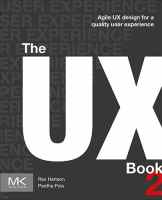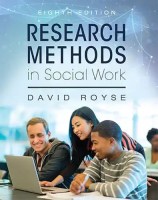2020 Textbook award-winning insight (Part 4): Co-authoring
We recently reached out to winners of the 2020 TAA Textbook Awards and asked them to answer some questions about why they made the decision to write their textbook, strategies they used for successful writing, advice on contracts, editing, marketing, co-authoring, and more. We will be sharing their answers in a series of posts over the next few weeks.
This fourth installment of the five-part series focuses on working with co-authors.
Can you share some strategies for developing a successful coauthoring relationship?
Talya Bauer, co-author of the 2020 Most Promising New Textbook Award winner, Human Resource Management: People, Data, and Analytics, 1e: “I would not recommend working with a new co-author for a textbook project. It is too important to ‘try out’ someone new.”
 David Caughlin, co-author of the 2020 Most Promising New Textbook Award winner, Human Resource Management: People, Data, and Analytics, 1e: “Ideally, have prior experience collaborating with your coauthors. Respond quickly to emails. Take time to thoughtfully and carefully consider each other’s respective work/contributions.”
David Caughlin, co-author of the 2020 Most Promising New Textbook Award winner, Human Resource Management: People, Data, and Analytics, 1e: “Ideally, have prior experience collaborating with your coauthors. Respond quickly to emails. Take time to thoughtfully and carefully consider each other’s respective work/contributions.”
David Clark, co-author of the 2020 Textbook Excellence Award winner, Molecular Biology, 3e: “I have been senior author for several editions. I have taken on junior authors who I knew reasonably well and got on well with. My junior authors all produced some of the accessory or online material before being taken on as authors. So I already knew they were reliable.”
 David Hall, co-author of the 2020 Textbook Excellence Award winner, Oklahoma Studies Weekly – Our State, 7th Volume, 2e: “Be patient and provide examples and data to get your point across. Have a reason for changes, not just hunches.”
David Hall, co-author of the 2020 Textbook Excellence Award winner, Oklahoma Studies Weekly – Our State, 7th Volume, 2e: “Be patient and provide examples and data to get your point across. Have a reason for changes, not just hunches.”
Rex Hartson, co-author of the 2020 Textbook Excellence Award winner, The UX Book: Agile UX Design for a Quality User Experience, 2e: “We (two) have worked together for many years and we each know how the other thinks. We work separately on chapters and read and edit each other’s work. We always used change tracking for editing in word, so the chapter writer knows what changes the chapter reader has made. As these changes are accepted, some are flagged for further discussion, which takes place via phone or an occasional visit in person.”
 Paul Insel, co-author of the 2020 McGuffey Longevity Award winner, Core Concepts in Health, 16e: “Discuss strengths and weaknesses.”
Paul Insel, co-author of the 2020 McGuffey Longevity Award winner, Core Concepts in Health, 16e: “Discuss strengths and weaknesses.”
Guy Marriage, author of the 2020 Most Promising New Textbook Award winner, Tall: the Design and Construction of High-Rise Architecture, 1e: “Pick your co-authors carefully, and explain to them very carefully what you want them to write about, and when you will need their copy. Deadlines are crucial so don’t let your book be sidelined by others non-performance.”
Joyce Munsch, co-author of the 2020 Textbook Excellence Award winner, Child Development From Infancy to Adolescence: An Active Learning Approach, 2e: “We communicate with each other frequently and offer honest feedback on what we each write at every step of the process. We are fortunate to be on the same page regarding what we want our texts to accomplish but it takes consistent and hard work to bring each book across the finish line.”
 Jamie Pope, co-author of the 2020 Textbook Excellence Award winner, Nutrition for a Changing World, 2e: “Clear expectations in terms of who does what, how work together towards deadlines, honor areas of expertise, respect for their time. As an example, if we have a week to turn a chapter edit around that requires both our input then one of us takes the lead and tracks changes/inserts comments or questions and then sends along to co-author for their edits and comments – then back to first author prior to submission. Important for co-authors to reconcile differing approaches or edits before going to editor….”
Jamie Pope, co-author of the 2020 Textbook Excellence Award winner, Nutrition for a Changing World, 2e: “Clear expectations in terms of who does what, how work together towards deadlines, honor areas of expertise, respect for their time. As an example, if we have a week to turn a chapter edit around that requires both our input then one of us takes the lead and tracks changes/inserts comments or questions and then sends along to co-author for their edits and comments – then back to first author prior to submission. Important for co-authors to reconcile differing approaches or edits before going to editor….”
David Royse, author of the 2020 McGuffey Longevity Award winner, Research Methods in Social Work, 8e: “Don’t pick a possible collaborator or co-author whom you don’t know really well. Select someone who can write, with a track record, and who is not already swimming in other projects.”
How was author order and contributions determined?
 Bauer: “It is important to determine this before the contract is signed or the first words are written and then to live into the agreement.”
Bauer: “It is important to determine this before the contract is signed or the first words are written and then to live into the agreement.”
Caughlin: “First author spearheaded the project, negotiated with publisher, and was the point person for all communications. Second author was second to come aboard the project. Third author was third to come aboard the project. Fourth author was fourth to come aboard the project.”
Clark: “Each new author was added after the older ones. I originally wrote the whole first edition. New authors decided how much effort they could put in and I gave them a fairly free choice of chapters. My main restriction was that each author did a reasonable mix of easy (introductory) medium and hard (lots of new material) chapters.”
 Hall: “In a blueprint meeting and while making a scope and sequence.”
Hall: “In a blueprint meeting and while making a scope and sequence.”
Hartson: “This depends on lot of factors. In our case the author with the longest record of work in the field was selected as first author.”
Insel: “I wrote the perspective and usually became the first author except as a graduate student, in which case I became second author.”
Ming Li, co-author of the 2020 McGuffey Longevity Award winner, An Introduction to Kolmogorov Complexity and Its Applications, 4e: “Alphabetical.”
 Marriage: “All worked out by me. I had 4 guest chapters – they slotted into the schedule I had worked out. Make them work for you, not the other way round.”
Marriage: “All worked out by me. I had 4 guest chapters – they slotted into the schedule I had worked out. Make them work for you, not the other way round.”
Munsch: “My co-author brought a prospectus to our publisher for an early childhood text. They wanted a child and adolescent development text and when she said that adolescence wasn’t her area of expertise, our publisher reached out to me about my interest in the project. From our first phone conversation, my co-author and I have had a shared vision for what a great textbook would look like. We got the contract and worked together for 6 months before we ever met face-to-face (we were on opposite sides of the country). The initial idea belongs to my co-author so she is first author, but we share everything else 50/50 and I’m grateful for it.”
 Pope: “I came on to the project first and was lead author.”
Pope: “I came on to the project first and was lead author.”
Royse: “My rule is the one who conceptualizes and does the most work goes first.”
How are royalties split among co-authors?
Bauer: “Again, this should be agreed upon up front and based on the agreement when authorship was determined.”
Caughlin: “Equally.”
Clark: “In the ratio of the number of chapters each author did.”
 Hall: “We are all salaried and get bonuses depending on income at the end of the year.”
Hall: “We are all salaried and get bonuses depending on income at the end of the year.”
Hartson: “This also depends and is a personal thing. Cases where one author does a significantly larger share of the writing can deem a larger percentage of the royalties to that author.”
Insel: “In most cases equally.”
Li: “Equal.”
 Marriage: “All the expenses were mine, so only once those are paid off, will any royalties split be considered.”
Marriage: “All the expenses were mine, so only once those are paid off, will any royalties split be considered.”
Munsch: “50/50”
Pope: “Original split proposed by editor. As project continued realized that my co-author was working as hard as I was and thus made royalty division more equitable. There probably does need to be a ‘lead’ author who is more the ‘face’ of the book – they may end up doing more of the marketing related efforts and receive slightly higher percent of royalties.”
Royse: “Based entirely on effort. For instance, 3 of 15 chapters = 20%.”
Be sure to check out the advice in other articles in this series:
- 2020 Textbook award-winning insight (Part 1): Purpose, timeline, and results
- 2020 Textbook award-winning insight (Part 2): Strategies, environment, and lessons
- 2020 Textbook award-winning insight (Part 3): Contracts, editing, and marketing
- 2020 Textbook award-winning insight (Part 5): Longevity
Please note that all content on this site is copyrighted by the Textbook & Academic Authors Association (TAA). Individual articles may be reposted and/or printed in non-commercial publications provided you include the byline (if applicable), the entire article without alterations, and this copyright notice: “© 2024, Textbook & Academic Authors Association (TAA). Originally published on the TAA Blog, Abstract on [Date, Issue, Number].” A copy of the issue in which the article is reprinted, or a link to the blog or online site, should be mailed to Kim Pawlak P.O. Box 337, Cochrane, WI 54622 or Kim.Pawlak @taaonline.net.

